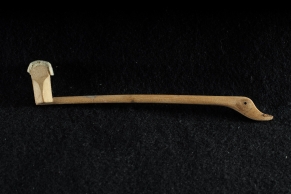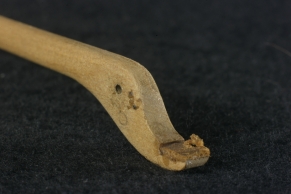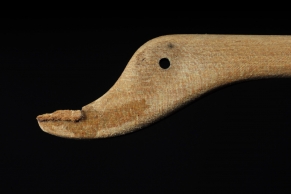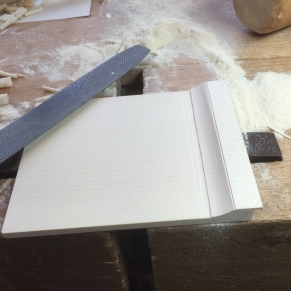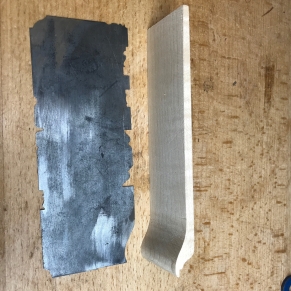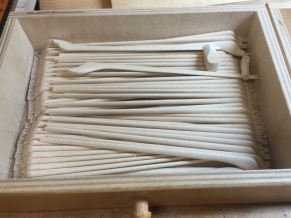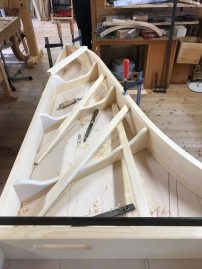Reconstruction of a grand (school of J. A. Stein c1780) Detail: Hammer shanks
Documentation and re-engineering
Production hypothesis 1:
Step 1:
Making a block of maple in the shape of the hammer shanks
Step 2:
Cutting the single shanks, shaping to individual measures with a file and card scraper.
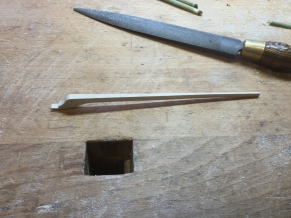
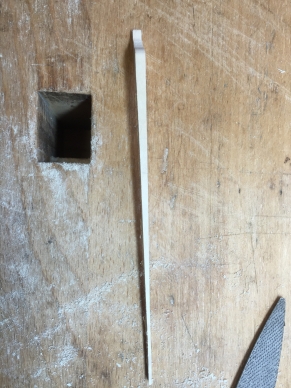
Result 1:
In principle it is possible to make the hammer shanks following this procedure but it is difficult to achieve the continuous decrease of dimensions in a controlled manner.
_______________________________________________________________________
Production hypothesis 2:
Grading the shank in a box with a conical groove, by slight shift the differences in sizes of shank ends from bass to treble can be achieved easily and under control. After the right-angled grading only the edges have to be rounded and smoothed using scrapers.

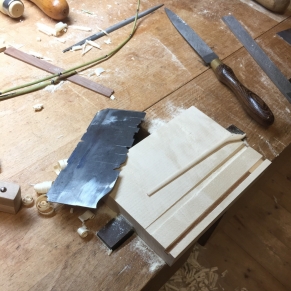
Result 2:
Grading in a box permits a continuous decrease from bass to treble. The traces of this procedure are resempling those found at the original objects by using the assumed tools, hand cut files and scrapers.
Details of reconstruction:
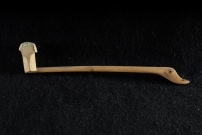
© Greifenberger Institut für Musikinstrumentenkunde | info@greifenberger-institut.de




